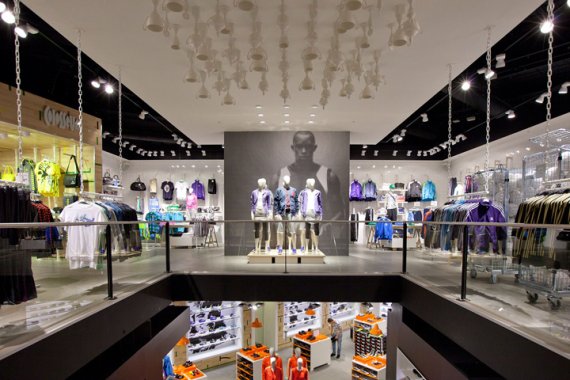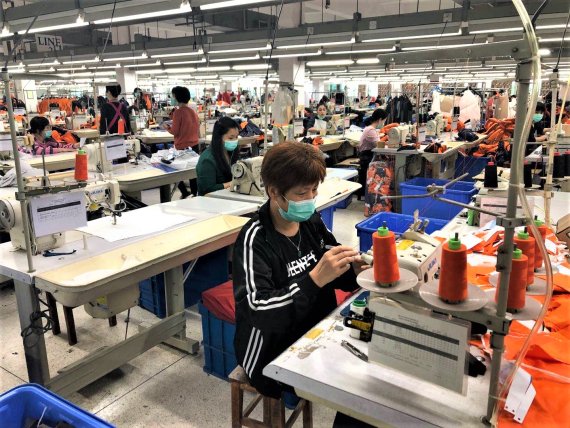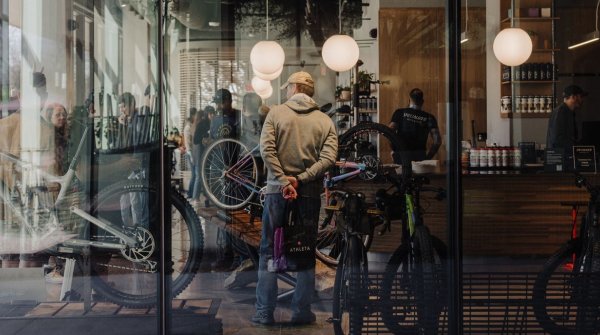
The World Federation of the Sporting Goods Industry (WFSGI) published the first survey on the impact of the corona crisis on retailers, brands and manufacturers in the global sports industry in April. Now the second survey has been published and shows first trends and changes in May. "The results of our May impulse survey show that COVID-19 is having a sustained negative impact on our industry, as expected. However, there is a flare-up of positive information," says WFSGI President Robbert de Kock. ISPO.com spoke with him about the results of the new survey.
Not all countries have yet reopened the retail sector. Robbert de Kock sees positive developments where stationary shopping is once again possible: "When the shops opened, consumers first bought everything they wanted to buy at the beginning of the pandemic but were no longer able to. These so-called "Revenge Purchases" are quite positive and give us hope for stationary trade, even if they naturally cannot make up for the lost sales". The winners of the crisis are still the sports of cycling, running and outdoor, because these sports were still possible in many countries despite shutdowns. "Bike shops were also able to benefit from the fact that they were allowed to keep their workshops open in many places," says de Kock. "However, many now have the supply chain problem and cannot fully meet demand."
And how will the brands and retailers react to the crisis in May? As in April, the majority of companies (64 percent) want to expand online trading. Although this is 10 percent less than in the previous month, the measure is still considered the most urgent task. "In Europe, people had a different attitude towards online trade than in Asia, for example, where younger target groups were already buying 80 percent of their daily needs online five years ago. With COVID-19, the consumer has now realized that the Internet has offered the opportunity to buy the missing products anyway. The crisis has accelerated this development and many brands will make better use of the Internet in the future," says de Kock. Almost half of the retailers and brands want to clear their inventories as quickly as possible, and here too the weightings have hardly changed. A new development, however, is that almost 40 percent of those surveyed have decided to hold minimum stocks and wait and see. In April this was an option for only 16 percent.
To the extent that economic constraints come to the fore, the goal of sustainability loses importance. When asked which trends will be important after the pandemic, only 50 percent believe in the trend towards sustainable products, 20 percent less than in April. Instead, 53 percent of companies (twice as many as in April) believe that price points will be important. Interest in local procurement has also fallen by half compared to April.

"The situation for ordering goods did not improve significantly in May," says Robbert de Kock about the situation of the manufacturing companies. "A significant drop in orders remains a challenge for the entire sector." However, the first shifts are becoming apparent, which are also connected with the regional course of the pandemic. Whereas in April the manufacturing companies reported a decline in orders from Europe and the USA of 95 and 86 percent respectively, May shows a slight recovery here with 87 and 72 percent. So while the situation in Europe and North America has improved slightly, the survey has shown a slight increase in the order freeze in South Asia, the Far East and the Africa & Middle East region. "In many countries the goods had already been delivered when the crisis broke out. When the shops in the individual regions then closed with a time delay, the goods could no longer be sold," explains De Kock. "Some countries have now reopened, but not all of them. It will therefore still take a while before we can actually expect a recovery in the order situation. I think the June survey will be more interesting here."
At least the supply chain seems to be stabilizing again. According to the survey, this is particularly the case in South Asia and Europe. There have not yet been any changes on the American continent or in the Africa and Middle East region. Overall, material procurement is also working better again. While in April more than 70 percent of the surveyed manufacturing companies had complained about material bottlenecks due to closures of supplier companies, this figure fell to 40 percent in May. Half of the companies surveyed no longer have any problems with the procurement of materials for their own production. Improvements can also be seen in terms of logistics: For example, shipping companies seem to have increased their capacities again, as only 12 percent of those surveyed faced shipping problems in May, compared to 30 percent in April.

Due to thin order books, extended payment terms and order cancellations, many companies in the supply chain are struggling with a lack of cash flow. "For almost 80 percent of those surveyed, this remains a crucial challenge, and the situation has improved only slightly over the past month," de Kock continues. This is having an impact on investment strategies, where companies now want to be even more cautious. As recently as April, around 60 percent of companies wanted to introduce lean production, in May the figure was 15 percent lower. About half of the companies surveyed want to consolidate production (April: 68 percent), and 40 percent of the companies are also considering staff cost-cutting measures, which is 5 percent less than in the previous month. The expectations for the coming months are correspondingly negative: The majority of those surveyed still expect their business to decline by 50 percent. The most affected regions continue to be Europe, where 80 percent of those surveyed expect their business to decline, and North America with 70 percent.
The coming winter will be the next challenge for the sports industry: the 2019/20 winter season with little snow, the early interruption of the season due to the outbreak of the pandemic and full warehouses are not good prerequisites for the start of the next season. According to de Kock, companies that have struggled with problems before could lose their livelihoods during the winter. "It will depend more than ever on whether we have enough snow or whether it will be cold enough to buy winter clothing. It will be a huge challenge."
 Sports BusinessThe future of the bike industry: 6 innovative bike stores
Sports BusinessThe future of the bike industry: 6 innovative bike stores
- ISPO awards
- Mountain sports
- Bike
- Design
- Retail
- Fitness
- Health
- ISPO Job Market
- ISPO Munich
- ISPO Shanghai
- Running
- Brands
- Sustainability
- Olympia
- OutDoor
- Promotion
- Sports Business
- ISPO Textrends
- Triathlon
- Water sports
- Winter sports
- eSports
- SportsTech
- OutDoor by ISPO
- Heroes
- Transformation
- Sport Fashion
- Urban Culture
- Challenges of a CEO
- Trade fairs
- Sports
- Find the Balance
- Product reviews
- Newsletter Exclusive Area
- Magazine




